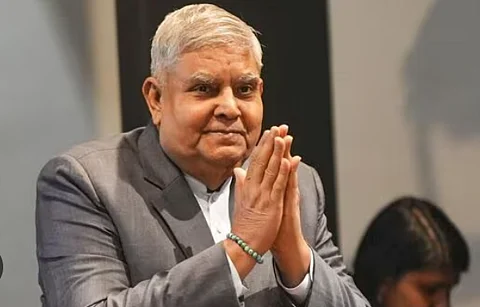

Vice-President Jagdeep Dhankhar’s sudden resignation has created an unusual mid-term vacancy in India’s constitutional framework. Citing health concerns, Dhankhar stepped down from both his roles — as the Vice-President of India and the ex-officio Chairman of the Rajya Sabha. With his abrupt exit, both positions are now temporarily unoccupied until a new Vice-President is elected.
Dhankhar, who was elected in 2022 with a record margin, was expected to serve a full five-year term until 2027. However, the Indian Constitution permits a Vice-President to resign at any time by submitting a written resignation to the President — a provision he exercised. His resignation was promptly accepted by President Droupadi Murmu.
This development leaves a significant gap, as the Vice-President holds the nation’s second-highest constitutional office and plays a critical legislative role as Chairperson of the Rajya Sabha. In the interim, Deputy Chairman Harivansh Narayan Singh (Janata Dal (United)) is expected to preside over the Upper House, in accordance with Rule 8 of the Rules of Procedure and Conduct of Business in the Rajya Sabha, ensuring legislative continuity.
In the event of a vacancy caused by resignation, the Indian Constitution, along with the Presidential and Vice-Presidential Elections Act, 1952, mandates that an election must be held “as soon as possible.” While a fixed 60-day window applies when a term ends normally, there is no strict deadline for mid-term resignations, though the process is typically expedited to maintain institutional stability.
The Election Commission of India will announce the election schedule soon.
The Vice-President is elected by an Electoral College comprising all members of both the Lok Sabha and Rajya Sabha. Voting is conducted via secret ballot using the single transferable vote system of proportional representation.
The election takes place at Parliament House in New Delhi, and the candidate who secures the majority of first-preference votes is declared elected. The winner serves a full five-year term from the date they assume office — which, in this case, will run through 2030, regardless of the time remaining in Dhankhar’s original tenure.
To be eligible, a candidate must:
Be a citizen of India
Be at least 35 years of age
Be qualified to be a member of the Rajya Sabha
Not hold any office of profit under the Government of India or any state